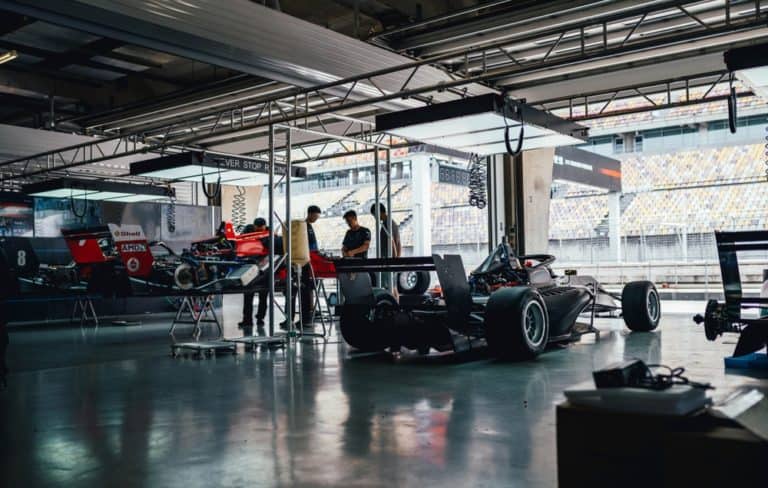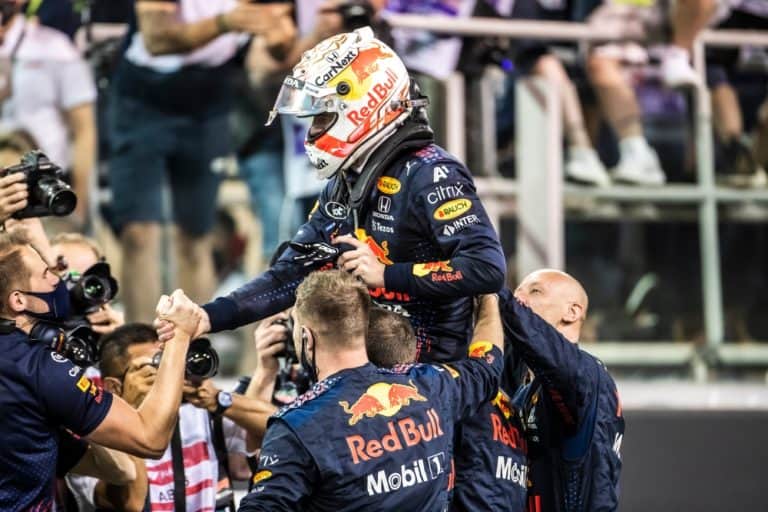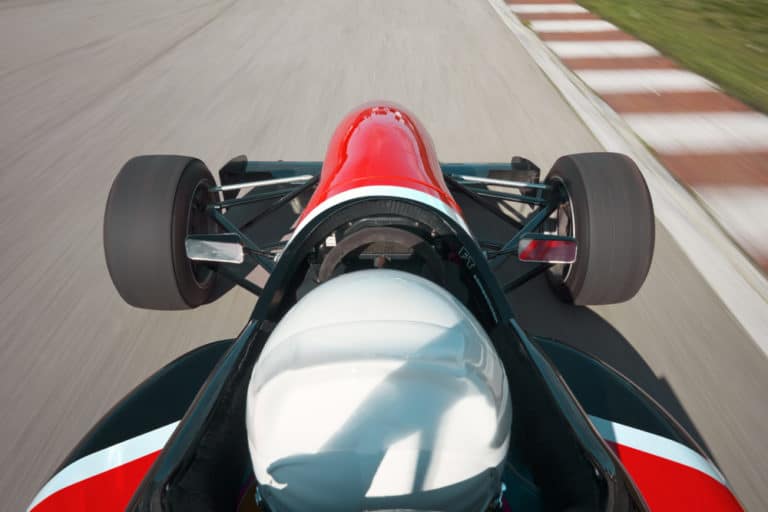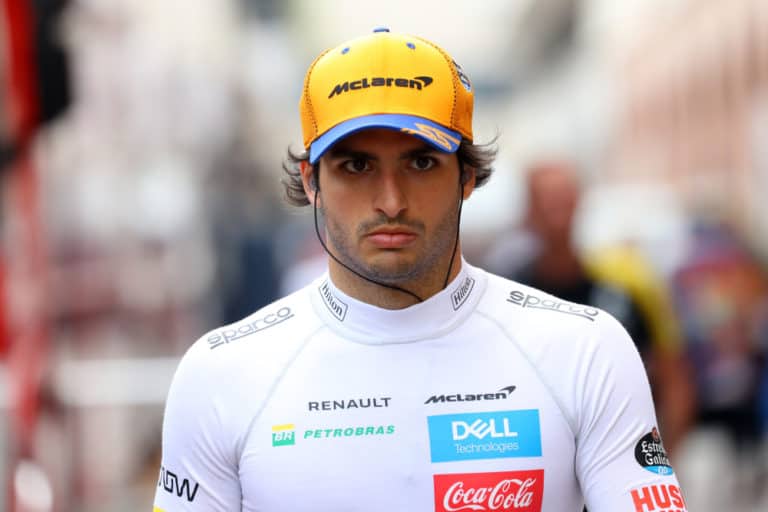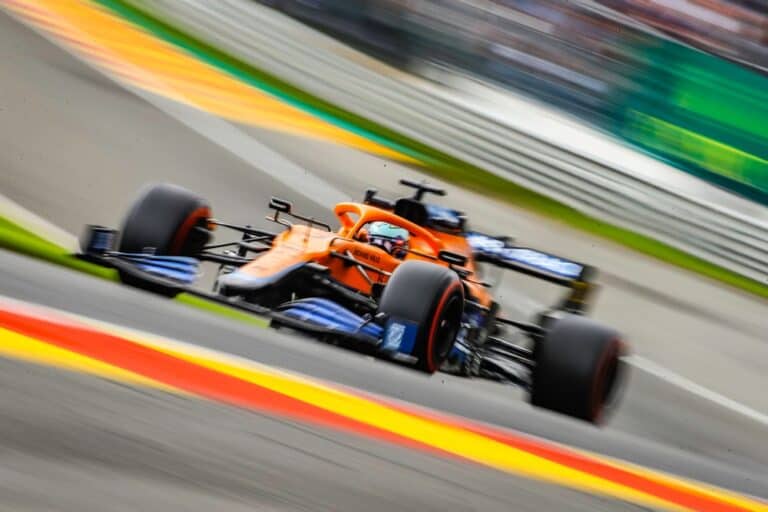Formula 1 is the pinnacle of motorsport. However, it has numerous complicated rules and regulations, so it can be very confusing at first if you are new. One of the questions you’re likely to ask is how do Formula 1 races work?
The F1 calendar consists of 23 Grands Prix, held from March to November, and 3 days of on-track action. Free practice sessions are held on Fridays, qualifying on Saturdays, and the race on Sundays lasts no more than 305 km and in which the drivers fight for victory.
The race is the most crucial moment of a Grand Prix, as it is the one session that determines the outcome of an entire weekend and, therefore, whether all the team’s hard work has paid off. Let’s look at everything surrounding F1 races and how they work without further ado.
If you’re looking for some F1 merchandise, check out the awesome stuff at the official F1 store here.
How Many Races Are There In Formula 1?
The Formula 1 calendar varies from season to season, as new circuits can be included, or other circuits can be dropped, so it is somewhat variable. Typically, the season consists of 19 and 22 Grands Prix, running from March to November, with pre-season testing in February.
During the last few years, the number of races has increased significantly, as just a few decades ago, the season counted around 18 or 19 races. In 2022, there are 22 races in 21 countries (the USA has two GPs), making it the longest season in history. Initially, there were 23 Grands Prix, but the Russian Grand Prix was canceled after the invasion of Ukraine.
Take a look at the 2022 calendar:
| Date | Grand Prix | Track |
| 18-20 March | Bahrain Grand Prix | Sakhir International Circuit |
| 25-27 March | Saudi Arabian Grand Prix | Jeddah Corniche Circuit |
| 8-10 April | Australian Grand Prix | Albert Park |
| 22-24 April | Emilia Romagna Grand Prix | Imola Circuit |
| 6-8 May | Miami Grand Prix | Miami International Autodrome |
| 20-22 May | Spanish Grand Prix | Circuit de Barcelona-Catalunya |
| 27-29 May | Monaco Grand Prix | Circuit de Monaco |
| 10-12 June | Azerbaijan Grand Prix | Baku City Circuit |
| 17-19 June | Canadian Grand Prix | Circuit Gilles Villeneuve |
| 1-3 July | British Grand Prix | Silverstone Circuit |
| 8-10 July | Austrian Grand Prix | Red Bull Ring |
| 22-24 July | French Grand Prix | Circuit Paul Ricard |
| 29-31 July | Hungarian Grand Prix | Hungaroring |
| 26-28 August | Belgian Grand Prix | Circuit de Spa-Francorchamps |
| 2-4 September | Dutch Grand Prix | Circuit Zandvoort |
| 9-11 September | Italian Grand Prix | Monza Circuit |
| September 30 – October 2 | Singapore Grand Prix | Marina Bay Street Circuit |
| 7-9 October | Japanese Grand Prix | Suzuka Circuit |
| 21-23 October | United States Grand Prix | Circuit of the Americas |
| 28-30 October | Mexico City Grand Prix | Autodromo Hermanos Rodríguez |
| 11-13 November | Sao Paulo Grand Prix | Interlagos Circuit |
| 18-20 November | Abu Dhabi Grand Prix | Yas Marina Circuit |
Formula 1 Race Weekend Format
A race weekend takes place from Friday to Sunday. Drivers usually arrive at the tracks on Wednesday, as they hold commercial events and press conferences during the previous days. On Friday, there are two free practice sessions (FP1 and FP2) of one and a half hours each, in which the drivers run to get used to the circuit and for the engineers to see how the car works and needs to be set up.
Before qualifying, a third free practice session is held on Saturday (FP3). Qualifying consists of 3 sessions, Q1 (18 minutes long), Q2, and Q3 (12 minutes each), where the drivers try to be the fastest and thus determine their position on Sunday’s race grid.
In Q1, all 20 drivers participate, and at the end, the 5 slowest drivers are eliminated and will start on Sunday in those positions. In Q2, the remaining 15 drivers participate, and the 5 slowest drivers are eliminated. In Q3, the remaining 10 drivers fight for pole position and the first positions on the grid.
Races are held on Sunday and are the highlight of the weekend. They are usually held around noon in the country, hosting the GP, although there are some night races. The drivers start from their respective grid positions and fight head-to-head for the victory and championship points.
| Day | Session | Length |
| Friday | Free Practice Sessions 1 & 2 | 1 hour and 30 minutes |
| Saturday | Qualifying: Q1, Q2 &Q3 | 18 min., 12 min. & 12 min. |
| Sunday | Race | 305 km or 2 hours |
How Do F1 Races Start?
The start is one of the most important and exciting moments of a Grand Prix, full of adrenaline and tension. On Sunday, the drivers leave the garage about half an hour before the race starts and head to the starting grid, where their mechanics make the final adjustments to the car and check that everything is correct.
A few minutes before the start, the drivers get into their cars and do a formation lap to warm up the tires. At the end of the formation lap, all drivers move into their starting positions.
When each driver is completely stopped and positioned, a green flag is waved, and the race director controls the start lights. The start lights have five red lights, which are lit one by one. After all the lights are turned on, they are turned off, and the race starts.
The drivers then release the clutch and accelerate as fast as possible while controlling the car.
How Long Is An F1 Race?
According to the FIA regulations, the distance of a Grand Prix cannot exceed 305 km, although many of them do so by a couple of kilometers. Depending on the length of the circuit and how fast it is, a number of laps are established for each GP so that they last approximately the same.
The only exception is the Monaco GP, which is only 260 km long. As the average speed of the circuit is much lower than the rest, the race lasts the same as on longer circuits.
A race usually lasts between 80 and 100 minutes. It can be extended depending on whether the Safety Car comes out many times or if there are red flags, in which the race is stopped and restarted later.
As with distance, there is also a maximum time limit. No race can last more than two hours of racing in a three-hour window. For this purpose, during a race, two clocks are running:
- Event clock: It is the clock that measures the total time of the event, regardless of whether the cars are racing or stopped for some reason, such as a red flag.
It starts running when the lights go out at the start of the race and do not stop until the checkered flag or up to three hours, at which point the race ends even if the drivers have not completed the full race distance.
- Race clock: It is the clock that measures the race time itself, that is when the cars are on track racing.
It also starts running when the lights go out but stops if there are red flags. If the race clock gets to two hours, even if the event clock is still under three hours, the race will be over when the leader finishes the lap. This usually happens on urban tracks such as Monaco or Singapore when there are many Safety Cars or very long ones, so time on track is extended by up to two hours.
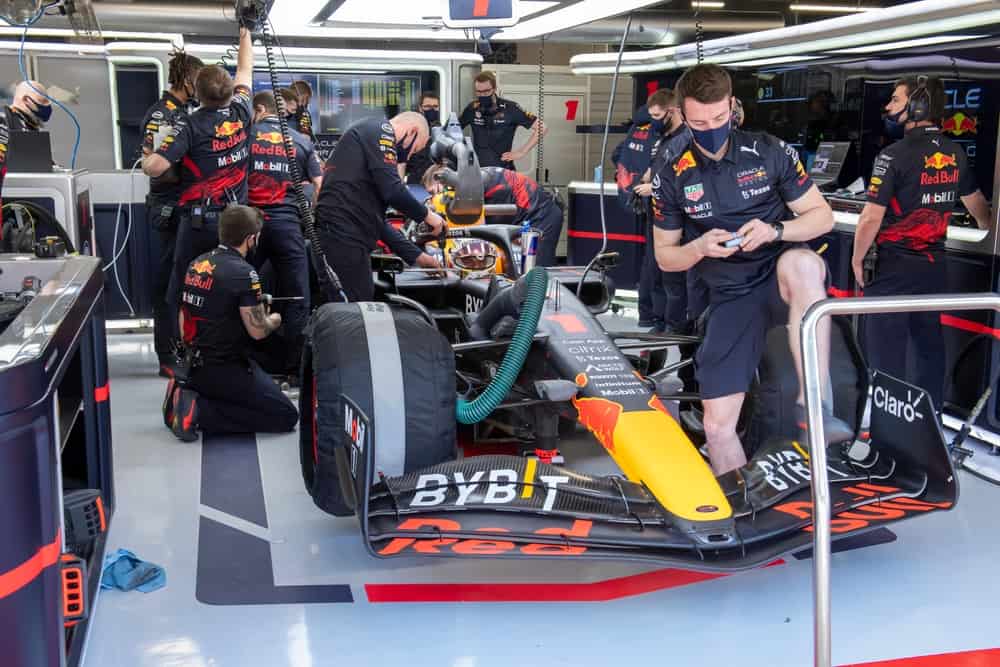
What Are The F1 Tire and Pit Stop Rules?
Pirelli has been the current F1 tire supplier since 2011 and has 5 types of dry compound selection ranging from C1 (the hardest tire) to C5 (the softest tire). The harder a tire is, the more durable it is and slower. Conversely, the softer a tire is, the faster it wears, but the faster laps are achieved.
Depending on the characteristics of each track, Pirelli selects three of these five compounds (For example, C2, C3, and C4), which we will call hard, medium, and soft in each race. Pirelli also has two compounds for the rain, which are intermediate and full wet. Intermediates are used when there is little rain and full wet when it is heavy, and they are always the same for each race.
Each team receives 13 sets of dry tires to use during the weekend: two sets of hard, three sets of medium, eight sets of soft, four sets of intermediate, and three sets of full wets, so it is critical to manage them well during the sessions.
At least one pit stop is mandatory during the race, as drivers must use two dry compounds. During a pit stop, the 23 mechanics of each team can only change the tires and the front wing if it is damaged but cannot refuel.
Pit stops typically last between 2 and 4 seconds, and the record for the fastest pit stop is held by the Red Bull team, which at the 2019 Brazilian GP managed to make one in just 1.82 seconds.
It is tough to run a whole race with only one compound, as it would wear considerably and you would lose a lot of time. If a driver does not make a pit stop during a race, he will be penalized at the end of the race.
On the other hand, when a race starts in the wet, it is not mandatory to make a pit stop, although it is normal for drivers to do so, either because the tires are very worn or because the conditions improve and dry tires would be needed.
What Is An F1 Sprint Race?
In 2021, the so-called “Sprint races” were introduced, held at the British, Italian, and Brazilian Grands Prix. In 2022, there are sprint races at the Emilia-Romagna, Austrian and Brazilian GPs, but what are they?
Sprint races are short 100-kilometer races (about 15 to 20 laps) that take place on Saturday, and the results of these races determine the starting order for the regular race on Sunday, so it’s like a qualifying session but with a special format. There are no pit stops, fuel, or tire management in these short races, so the drivers give it their all.
At these Grands Prix, the typical qualifying session (Q1, Q2, and Q3) takes place on Friday and will determine the starting grid for the sprint race. Regardless of the outcome of Saturday’s race, whoever sets the fastest time on Friday will get the pole position.
The outcome of the sprint races is quite important, not only for Sunday but also because the top eight finishers score points for the championship, based on the following scale: 8-7-6-5-4-4-3-2-1. Liberty Media introduced the sprint races to offer more variety and thus enhance the spectacle and attract more fans.
What Are The Flags In F1, And What Do they Mean?
In Formula 1, flags are used by the marshals, who stand around the track on the front line to give messages to all the drivers, i.e., to inform and warn them about dangers or incidents on track or any relevant information. There are numerous flags to signal different things, so here is an overview of what they look like and what they are used for:
- Chequered: Indicates the end of the race, qualifying, or free practice. It is generally associated with the winner, as it is waved when crossing the finish line.
- Yellow: This is the most commonly used. It indicates danger, such as a stalled car or car parts on the track. When the marshals wave one, drivers must slow down and cannot overtake. If two are shaken, they must also be prepared to stop the car anytime because something is blocking the track.
- Green: Indicates that the track is clear, so drivers can return to normal racing conditions, run at maximum speed, and overtake their rivals. It is used when the yellow flags are over, after a Safety Car, or at the start of free practice and qualifying sessions.
- Red: Indicates that the session is stopped immediately, due to a hazard, either due to an accident on track or bad weather conditions. Cars must slow down significantly and proceed to the pitlane.
- Blue: Warns a driver when he is being lapped by another driver who is one lap ahead of him in the race, so he must allow himself to be overtaken without hindering him.
- Yellow & Red Stripes: It warns drivers that the track is slippery, usually due to water or oil.
- Black With An Orange Circle: It is waved to a driver who has a mechanical problem with his car so that he immediately goes to the pitlane, as he may pose a danger to the other drivers or himself.
- Black & White: Warn drivers for unsportsmanlike behavior that may lead to penalties if they continue to do so.
- Black: If a driver is shown a black flag, he has been disqualified and must immediately retire from the race. A driver may be disqualified for committing unsafe actions or repeated unsportsmanlike behavior.
- White: Warns drivers that there are slow vehicles on the track or if there is a miscellaneous vehicle on the track, such as an ambulance or tow truck. In free practice sessions, it is used when cars are making a simulated start.
What Is A Safety Car In Formula 1?
During Formula 1 races, it is common for the Safety Car to make an appearance. The Safety Car, or pace car as it is often called, comes out on track in the event of a hazard, such as an accident obstructing the track or bad weather, and remains on track until the hazard is over.
When a Safety Car enters the track, the drivers must slow down and follow behind, so the race is neutralized, and all drivers regroup. The duration of the Safety Car period depends on how long it takes for the track to be cleared of all danger, so it can last from a couple of laps to up to 10 laps.
In 2015 the so-called Virtual Safety Car was introduced, indicated by illuminated panels with the letters “VSC” and double yellow flags. The VSC is used on occasions of danger but which do not require the departure of the Safety Car, such as during the removal of a car from the track.
During Virtual Safety Car periods, drivers must slow down and cannot overtake. Drivers have a predefined minimum time that they cannot exceed, approximately 30% slower than the race pace. The Safety Car ends when it returns to the pit lane, and the green flags are waved, while the VSC ends when the luminous panels go out and, in the same way, the green flags are waved.
How Does F1 Point Scoring Work?
The top 10 finishers of each Grand Prix receive points according to the following scale: 25-18-15-12-10-8-6-4-2-1.
In addition, a point will be awarded to the driver who has obtained the fastest lap of the race if he has finished in the top ten. No points will be awarded if the race is suspended before 2 laps have been completed. If the race is suspended later, reduced points will be offered according to how much of the total distance has been completed.
Therefore, the scoring system would be as follows:
| Position | % completed | 1st | 2nd | 3rd | 4th | 5th | 6th | 7th | 8th | 9th | 10th | Fastest Lap |
| Points awarded | 75-100% | 25 | 18 | 15 | 12 | 10 | 8 | 6 | 4 | 2 | 1 | 1 |
| 50-75% | 19 | 14 | 12 | 10 | 8 | 6 | 4 | 3 | 2 | 1 | 1 | |
| 25-50% | 13 | 10 | 8 | 6 | 5 | 4 | 3 | 2 | 1 | None | 1 | |
| 2 laps – 25% | 6 | 4 | 3 | 2 | 1 | None | ||||||
| <2 laps | None |
In Formula 1 there are two championships: drivers and constructors (teams). Drivers score points individually in each race, but they also score points for their respective constructors. For example, if one Ferrari driver has 20 points and the other 10, then Ferrari would have 30 points in the constructors’ championship.
What Happens At The End Of An F1 Race?
When the checkered flag is waved and the cars finish the race, they do one more lap (without racing) to head to the pitlane. During this lap, slower and more relaxed, the drivers talk on the radio with the team to ask about the results and the race in general. The podium finishers usually make gestures and wave to the spectators.
Drivers park their cars in a specific spot in the pitlane, where the FIA will ensure they have not violated any rules during the race, such as checking that they meet the minimum weight. The podium finishers park their cars separately in a place to celebrate with the team.
They are then interviewed and go to a cool-down room before going to the podium.
After the race, all drivers must be weighed. This is due to medical reasons, as the toughness of the races means that riders can lose up to 4 kg mainly from sweat.
When the podium finishers have stepped off the podium, and all the drivers have taken off their racing suits, they give a post-race interview in which they talk about the weekend and what happened in the race, and after that, they end the GP. However, the team members still have a lot of work to do, as they have to pack up and prepare everything for the next GP.
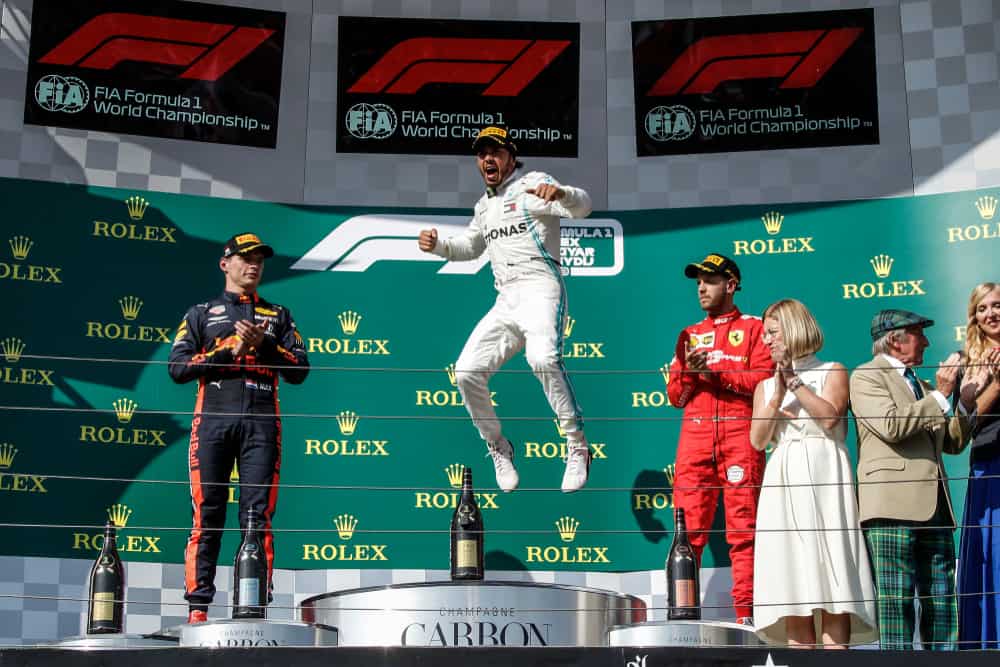
Conclusion
Races are the essence of Formula 1, as they decide everything and offer the greatest spectacle, full of overtaking and battles between drivers.
For about an hour and a half, F1 drivers give their all to cross the finish line in the best possible position and achieve a good result for the team.
References
- https://www.formula1.com/en/racing/2022.html
- https://www.motorsport.com/f1/news/insiders-guide-what-are-f1s-tyre-rules/6885458/
- https://businessinsider.mx/f1-para-principiantes-lo-que-debes-saber-para-entenderla-guia-basica/
- https://flowracers.com/blog/how-f1-start-lights-work/
- https://en.wikipedia.org/wiki/Formula_One_racing


